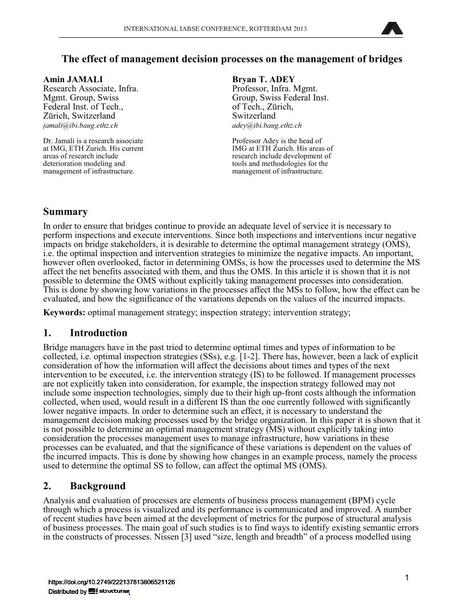The effect of management decision processes on the management of bridges

|
|
|||||||||||
Détails bibliographiques
| Auteur(s): |
Amin Jamali
Bryan T. Adey |
||||
|---|---|---|---|---|---|
| Médium: | papier de conférence | ||||
| Langue(s): | anglais | ||||
| Conférence: | IABSE Conference: Assessment, Upgrading and Refurbishment of Infrastructures, Rotterdam, The Netherlands, 6-8 May 2013 | ||||
| Publié dans: | IABSE Conference, Rotterdam, May 2013 | ||||
|
|||||
| Page(s): | 484-485 | ||||
| Nombre total de pages (du PDF): | 8 | ||||
| Année: | 2013 | ||||
| DOI: | 10.2749/222137813806521126 | ||||
| Abstrait: |
In order to ensure that bridges continue to provide an adequate level of service it is necessary to perform inspections and execute interventions. Since both inspections and interventions incur negative impacts on bridge stakeholders, it is desirable to determine the optimal management strategy (OMS), i.e. the optimal inspection and intervention strategies to minimize the negative impacts. An important, however often overlooked, factor in determining OMSs, is how the processes used to determine the MS affect the net benefits associated with them, and thus the OMS. In this article it is shown that it is not possible to determine the OMS without explicitly taking management processes into consideration. This is done by showing how variations in the processes affect the MSs to follow, how the effect can be evaluated, and how the significance of the variations depends on the values of the incurred impacts. |
||||
